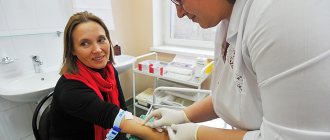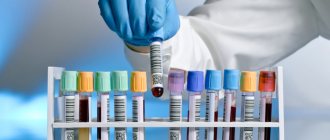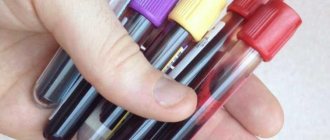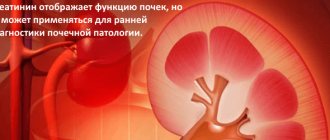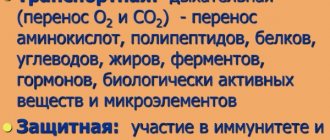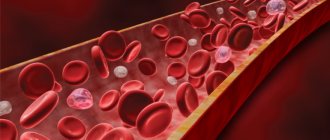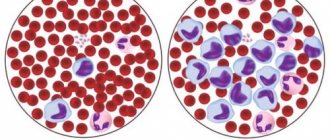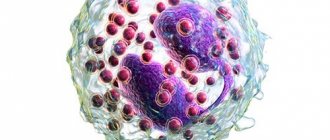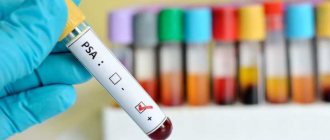White blood cells or leukocytes themselves are heterogeneous. This is the general name for five structures. The goal of all of them is the same: the fight against infectious and other abnormal agents that invade the human body. Accordingly, they form the basis of the immune system.
Neutrophils are one of the subtypes of leukocytes. They are most numerous in relation to other similar cells and make up up to 70% of the total mass of such cells. They perform important functions but are heterogeneous in nature.
In a sense, these structures are universal, capable of fighting most types of pathogens and foreign objects. Deviations from the norm always indicate the development of pathological processes, not counting a small number of subjective reasons, for example, taking certain medications.
The appropriateness of treatment is determined by the specific clinical situation. Neutrophils in a blood test reflect immune function, therefore any deviation is potentially dangerous, which is what doctors proceed from when considering the need for therapy.
Functions of neutrophils
These cells solve a large group of specific tasks facing the human body’s defenses:
Release of bactericidal substances
The structures of cytological units contain specialized compounds that have the ability to kill pathogenic flora. When a target is detected, the neutrophil releases a substance that dissolves the cell membranes of the pathogen.
Thus, the genetic material is not encapsulated and the bacterium dies. This is one of the main mechanisms of neutrophil activity.
Antigen binding
The cells in question on the membranes have special receptors for specific immunoglobulins of class G; they are the most common in the body and are highly active in the fight against infectious agents of all types.
Due to the ability to bind such substances, neutrophils can quickly transport them to the site of injury to enhance the immune response. Thus, the destruction of pathogens is achieved much faster.
Direct absorption of microorganisms
Formed cells are capable of phagocytosis. They are large and aggressive enough to destroy bacteria by “eating” them. On average, a neutrophil can eliminate up to 20-30 foreign structures using different methods. Which indicates its high efficiency.
Inhibition and inactivation of viral agents
White blood cells have the ability to reduce the rate of replication of foreign pathogens and reduce the productivity of their existence. In favorable cases, complete suppression of the structures is achieved, due to which the inflammatory processes disappear.
The functions of neutrophils ultimately come down to one thing - the destruction of bacteria, viruses, fungi, and other objects in various ways. Therefore, an increase in the Neut indicator in a blood test indicates an immune response, be it a reaction to an infectious lesion or allergic processes. Next, you need to understand it in detail, in essence.
Kinds
Neutrophils, despite the same name, are also heterogeneous. There are several types of these. Depending on the functional purpose (narrow specialization) or the degree of readiness for work.
In total, four types can be defined:
- Myelocyte. Relatively speaking, it cannot be called a type of white blood cell. This is an extremely immature cell. In essence, it has not even differentiated yet. This is a rough “preparation” of the organism for future transformation into other structures. Not necessarily neutrophils.
Transformation into anything is possible: from a platelet to an eosinophil. Normally, such structures should not exist in the bloodstream at all. They concentrate in the bone marrow and are finally formed there, only then they enter the body and begin to do their job.
- Young or immature neutrophils. Intermediate form. It is also stored in the place of its own synthesis, providing a conditional reserve. In case more immune cells need to be released. Similar varieties are also absent from the bloodstream. Because they are not yet capable of working.
On the other hand, as a result of random phenomena, a small number of them may be released. This is not critical, but the quantity should be within the error level. About 0.1-1%, with a possible downward deviation. All obvious changes indicate the development of one or another pathological process in the body.
- Band neutrophils. Make up a minimum of the total mass. Not more than 5% of the quantity. They got their name due to the peculiarities of their shape, which is clearly visible during microscopic analysis. These cells have approximately the same functions, but are more highly specialized. They get involved out of necessity when the majority cannot cope.
- Neutrophils are segmented. The most numerous subtype of white blood cells. According to various estimates, it accounts for up to 70% of the number of structures. Solve the problems described above constantly and fully. The work of neutrophils of this type is especially noticeable during the development of an infectious-inflammatory process in the body.
There are thus only two functionally active species. Both of them are approximately equivalent in features, role and potential for combating pathogenic agents, microorganisms, viruses, fungi.
Role of Blood Cells
Neutrophils are a special type of white blood cell that are produced in the bone marrow.
These cells destroy harmful bacilli that enter the organs and perform other important functions:
- are the first to fight against viruses and pathogenic bacteria, helping the child’s body cope with the disease;
- help destroy dead cells and stimulate the recovery process.
There are two types of neutrophils:
- Band cells, they are called immature cells; only newborn children have a large number. With age, there are fewer of them in the body due to the increase in other cells.
- Segmented cells are also classified as mature neutrophils. They perform a protective function in the body from harmful microbes and viruses and remain throughout life.
Therefore, the norm of cells in the blood depends on the age of the child; if it corresponds to the standard table, the child is protected from pathogenic microbes.
A newborn child has a high level of segmented cells - up to 80%; at the age of two it ranges from 30 to 55%.
Often, an increased level of segmented neutrophils indicates a child’s illness; an inflammatory process occurs in the body. Such a deviation requires additional examination, which will help make the correct diagnosis and the doctor will prescribe adequate drug therapy.
Standard tables
Neutrophils are designated in a blood test as Neut, and the number of cells is calculated as a percentage. But in laboratory and clinical practice, the absolute content of neutrophils is also used, this is an indicator that is calculated in the number of units per liter of blood.
Which method will be used depends on the specific institution and research methods.
Among women
The indicators vary quite widely. On average, the norm of neutrophils in the blood of women is 50-59%, which is slightly higher than that of men. This is due to the peculiarities of the immune system and other factors.
| Age (years) | Neutrophils as a percentage (calculated according to the most numerous variety - segmented) |
| 16-18 | 51-56% |
| 18-21 | 52-57% |
| 22-35 | 52-59% |
| 35-45 | 51-58% |
| 45-60 | 50-55% |
| After 60 years | 52-58% |
The data in the table is approximate; slight individual fluctuations downward (but not upward) are possible. It is also necessary to take into account the patient’s condition at the time of the study.
Peak hormonal events affect the concentration of neutrophils. Whether it’s active puberty (especially with delayed formation), the menstrual cycle, pregnancy.
In men
In men, normal corpuscle values are not much lower (49-57%), in general, we are talking about a discrepancy of several percent. Depending on the case. This is a general rule.
| Years of life | Levels of segmented neutrophils |
| 16-18 | 50-54% |
| 18-21 | 50-55% |
| 22-35 | 51-57% |
| 35-45 | 50-54% |
| 35-45 | 49-53% |
| Over 60 | 50-56% |
In adults, the normal range of neutrophils ranges from 30 to 59% on average. The spread is large. A lower limit is also possible and is not considered an anomaly.
The tables present average numbers that do not fully reflect the clinical features and reality of the situation. Therefore, the decoding and interpretation should be done by a doctor.
In children
In this case, it is necessary to calculate not only by year, but also by day, month, depending on the age of the child.
| Moment of life | Neutrophil norms as a percentage |
| Moment of birth | 59-60% |
| 12 hours | 65-68% |
| 1st day | 60-61% |
| 7 days | 40-43% |
| 2 weeks | 39-40% |
| 1 month | 35-38% |
| 6 months | 30-32% |
| 1 year | 30-31% |
| 2 years | 30-33% |
| 4 years | 40-42% |
| 6 years | 49-51% |
| 8 years | 50-53% |
| 10 years | 50-54% |
| 11-18 years old | 52-55% |
The sharp increase in the first days is due to the active formation of immunity and the appearance in an aggressive external environment. Then there is a gradual adaptation, everything returns to normal after the first few years of life.
Absolute measures give approximately the same results in proportion.
What are the norms of neutrophils in the blood?
You can see the relative number of granulocytes, usually indicated as a percentage of each of its types, in this table:
| Age | Normal neutrophil content (%) | |
| Rod | Segmented | |
| First day | 0,5–17 | 46–80 |
| 2–10 days | 0,5–7 | 26–56 |
| 11–0 days | 0,5–4,5 | 15–35 |
| Up to 1 year | 1–5 | 17–46 |
| 2–6 years | 1–5 | 30–59 |
| 7–9 years | 1–5 | 39–60 |
| 10–12 years | 1–5 | 43–62 |
| 13–15 years old | 1–5 | 45–65 |
| 16+ | 1–6 | 46–72 |
Both men and women have an equal number of neutrophil cells, therefore, it does not depend on a person’s gender. Now you can study digital indicators that involve counting granulocytes in a certain amount of blood. The absolute parameters are given in the table:
| Age | Neutrophil reference values (×10⁹) |
| Up to 1 year | 1,5–8,5 |
| 2–6 years | 1,5–8,6 |
| 7–12 years | 1,8–8,0 |
| 13–16 years old | 1,8–7,5 |
| 17+ | 1,8–6,5 |
For women expecting a baby, the figure can easily increase to 7–10×10⁹, which is their own norm. The following abbreviations are often found on the form:
- Relative granulocytes – neutrophils (rel), NE% and NEUT%.
- Absolute granulocytes – neutrophils (rel), NE# and NEUT#.
It should be noted that neutrophil leukocytes are sometimes indicated in the form of 4 varieties, including myelocytes, young, rods and segments. The content of the last two types has already been discussed, so it is necessary to pay attention to the first values. These cellular elements are early types of neutrophils: they are found exclusively in the red bone marrow before full adulthood.
Consequently, their number is as follows: myelocytes - 0%, young - 0-1% (in individual cases, a slight excess is not considered dangerous). Only a competent doctor can accurately interpret the results of a blood test. Self-diagnosis is highly undesirable.
Natural causes of increase
An increase in the concentration of neutrophils (a shift in the leukocyte formula to the right) is not always of an abnormal origin. Although this is true for most possible clinical situations.
If we talk about natural factors, they will be like this:
- Pregnancy. Gestation creates a large load on the mother’s body, and all immune processes intensify. Which ultimately causes an increase in levels in a laboratory study. This is not dangerous, because the answer is false. However, just in case, you need to check other indicators. Sluggish manifestation of pathology is possible.
- Delivery.
- The menstrual cycle and the period right before it. The body considers the natural monthly processes of egg maturation and release as intense stress. The result is a false immune reaction. This does not pose any danger; you need to wait until the end of the period and everything will return to normal on its own.
- Exercise stress. The more intense it is, the more significant the deviations in neutrophil levels will be. Levels return to adequate levels without medical assistance or external influence in general.
- Consuming large amounts of food. In general, food causes a temporary increase in the concentration of formed cells. The relationship is directly proportional. Everything returns to normal after a few hours.
Stress affects performance in the same way. This also applies to any emotional manifestations.
Segmented neutrophils are increased
If neutrophils in the blood are elevated, what does this mean and what is the reason – doctors cannot immediately answer for sure. The only correct statement is the presence of an infection, a pathology complicated by the penetration of pathogenic microbes into the body. In order to accurately establish a reliable cause, a thorough, comprehensive examination of the entire body is required.
However, in most cases, increased segmented neutrophils in the blood are recorded when:
- development of bacterial infection;
- the appearance of a fungal infection;
- mild inflammatory process.
Segmented neutrophils are increased - reasons
An increase in segmented neutrophils is always a reason to examine the body. In such cases, they speak of a shift in the leukocyte formula to the right.
Among the common situations accompanied by this symptomatology, it is necessary to highlight:
- Not related to pathology: physical activity, food intake.
- Pathological: purulent abscesses, burns, trophic ulcers, leukemia, acute inflammatory diseases (pneumonia, tonsillitis, otitis, sepsis, peritonitis), the formation of malignant or benign tumors.
Segmented neutrophils are increased - what to do?
The main task in this case is to determine the reason why increased segmented neutrophils are detected.
The patient is indicated for additional examination, including consultations with the following specialists:
- therapist;
- infectious disease specialist;
- hematologist.
The patient must strictly follow the doctor's instructions and prescriptions. If neutrophilia is caused by a certain pathology, therapy is aimed at its complete cure.
To help your body recover faster, doctors recommend following the following rules:
- Rejection of bad habits.
- Healthy eating.
- Seasonal therapy using multivitamins.
Pathological factors for increasing neutrophil concentration
The norm of neutrophils in the blood changes mainly for abnormal reasons. If we talk about specific conditions:
- Inflammatory processes. There are two types. Infectious. The most numerous group. It is typical for them to enter the body of foreign structures. Ultimately, increasing the levels of neutrophils and more is an adequate and correct response of the body to an external attack.
The situation is somewhat more complicated with the second subtype of the pathological process. When an autoimmune response develops. Inflammatory phenomena of this kind are characterized by the absence of a pathogen as such. The body attacks itself, its own cells.
This is the result of a malfunction of the immune system. Neutrophils do not perform a useful function, but the increase is obvious.
- Endocrine disorders. Mainly those that provoke severe metabolic disorders. The leader of this group is considered to be diabetes mellitus. This can also include pathologies of the thyroid gland and adrenal glands. Various types.
- Malignant tumors. Regardless of location and type. Neutrophil counts especially increase if bone marrow function is disrupted. Metastases or primary neoplasia, this no longer plays a role in the context of determining the causes.
- In addition to the actual diseases, they call the iatrogenic factor. That is, all kinds of traumatic surgical interventions. The change in levels persists throughout the entire rehabilitation period. Only then does it fade away.
Please note:
There are a few exceptions to the rules. If neutrophils in an obvious pathological process are within the normal range, this is not natural. We are talking about the weakness of the immune system; it is necessary to treat the underlying disease as quickly as possible.
Neutrophils in a blood test: interpretation
When deciphering a blood test for neutrophils, one should take into account the fact that the norm of these cells in men and women is virtually the same. Fluctuations in the norm mainly depend on age. Since the “neutrophils” column does not exist in the general blood test form, medical specialists consider the norm of the above cells using the “band neutrophils” and “segmented neutrophils” columns.
| Age | Neutrophil norm | |
| Rod | Segmented | |
| Adults | From 1 to 4% | From 40 to 60% |
| Children aged 6 to 12 years | From 1 to 4% | From 40 to 60% |
| Children aged 4 to 5 years | From 1 to 4% | From 35 to 55% |
| Children aged 2 to 12 months | From 1 to 5% | From 45 to 65% |
| Children aged 1 month | From 1 to 5% | From 17 to 30% |
| Babies aged 2 weeks | From 1 to 4% | From 27 to 47% |
| Children under 1 week old | From 1 to 5% | From 35 to 55% |
| Newborns | From 5 to 12% | From 50 to 70% |
Both the independent norm of neutrophils and the relationship between young and mature cells are of diagnostic importance. The ratio between neutrophils is called "shift".
Neutrophilia (neutrophilia) is an excess of neutrophils in the blood. Neutrophilia is a reflection of the body’s unique defense against inflammation and infections. In most cases, neutrophilia is combined with leukocytosis. Neutrophilia with a band shift is quite typical for a bacterial infection.
Neutropenia is a decrease in the concentration of neutrophils in the blood. This condition indicates organic or functional inhibition of hematopoiesis or active destruction of neutrophils. A decrease in the content of these cells in the blood is observed with the use of certain medications, as well as with viral infections. Neutropenia usually indicates low immunity.
Reasons for the downgrade
There are also many factors that shift the leukocyte formula to the left.
- HIV. Huge problem. The pathological process provokes depression of the entire immune system. In this case, even against the background of a real threat, damage to the body, there will be no growth indicators at all. On the contrary, they will be lowered. Maintenance therapy is required.
- Aplastic anemia. Accompanied by a violation of the synthesis of all possible formed blood cells. Leukocytes of different types are no exception here. Without specific treatment, potentially fatal complications are likely. Action needs to be taken faster.
- Severe infectious processes. In this case, the need for shaped cells for active combat is growing. The body may not have time to produce new ones, hence the temporary decline.
- General weakness of all systems. Neutrophils are lower than normal if a person has suffered a serious illness in the recent past or does not receive enough nutrients.
- History of alcoholism. The same goes for those who drink heavily. The concentration of neutrophils is less than adequate values, since their synthesis is suppressed by ethanol breakdown products. The general exhaustion of the body of such people also affects.
- Hepatitis. Inflammatory process of the liver. It has an infectious, particularly viral origin.
- Sepsis. Generalized damage to the body.
- Radiation sickness.
- Intoxication. In case of poisoning with certain poisons. A group of drugs also has a similar effect. The possibility of such a side effect is reflected in the annotations for specific pharmaceutical products.
All causes and mechanisms of development of neutropenia (low concentration of neutrophils) are described in this article.
Reasons for the increase in some cells and the decrease in others
It is necessary to take into account other factors of growth or decrease in indicators. This applies to natural, natural phenomena caused by physiology. There are many shaped cells designed to fight external attacks. In this case, several situations are possible.
- Neutrophils are increased and lymphocytes are decreased. The first phase of eliminating foreign structures is underway. The central immunity is not yet active enough, and there is no need for it. If effective, changes in laboratory parameters will not be so significant.
- If neutrophils are low and lymphocytes are high, this indicates the second phase of the defense response. When central cells begin to work more actively, and local-level structures temporarily reduce the intensity of activity.
Without going into complex biological mechanisms, it is worth mentioning the general rule: when neutrophils increase, lymphocytes decrease and vice versa. This is normal and natural. There is no simultaneous increase or decrease observed.
What additional examinations are needed?
Usually, a general blood test is sufficient to establish the fact of an increase in the level of neutrophils. It shows a fairly comprehensive picture of the shaped cells.
But this is not enough. To understand the situation and help the patient, the main task is to identify the root cause of the disorder. This is somewhat more complicated and requires additional research.
- Oral survey. Allows you to evaluate a person’s complaints about the condition. The symptomatic complex gives an idea of the primary source of infection or other factors of deviation.
- Anamnesis collection.
- X-ray of the chest organs.
- Visual assessment of the condition of the oropharynx and ENT organs in general.
- Study of biochemistry indicators.
- Ultrasound of the abdominal cavity.
Other activities are scheduled as needed. It all depends on the hypotheses expressed by the specialist. There may be several specialized doctors here, because we are not talking about a specific diagnosis, but about a laboratory finding. First of all, it makes sense to contact a therapist (pediatrician).
Treatment
Correction is determined by the specific cause of the pathological process. The goal is not to raise neutrophils in the blood using artificial methods; it is necessary to eliminate the source of the problem. Drug therapy is practiced.
In case of infectious genesis of the disorder, the following means are used:
- Antibiotics. Different types.
- Stimulators of leukocyte synthesis. Leukogen and others. Carefully.
- Local antiseptic drugs.
If we are talking about autoimmune reactions:
- Suppressors. To suppress the activity of protective forces.
- Glucocorticoids. Prednisolone and similar.
- Others may be used. According to the needs and prescription of the treating specialist.
The number of neutrophils in the blood also shows the effectiveness of therapy, therefore it is possible to study the quality of the correction carried out according to this criterion.
Otherwise, the techniques depend on the clinical situation. Diabetes mellitus requires glucose control, malignant tumors require surgical treatment, etc.
Causes of high segmented neutrophils in the blood in children
The level of neutrophils in the blood of children is directly correlated with the severity of the impact of pathogens on the child’s body. Slight fluctuations in the number of neutrophils can be caused by physical activity, stress, and food intake. But an increase in cells compared to the norm by several times indicates the presence of a disease:
- inflammation in the active phase of various origins and localization;
- bacterial infections, including pyococcal;
- fungal diseases;
- tumor growth;
- large area burns;
- poisoning-intoxication;
- diabetes mellitus;
- appendicitis;
- abscess formation;
- trophic disorders;
- hemolysis of red blood cells;
- bleeding with anemia;
- taking hormonal drugs.
Neutrophils can also grow in the postoperative period. The peculiarity of childhood neutrophilia is that in children the segments are responsible not only for infections, but also for the state of the nervous system. Therefore, even crying can provoke their growth.
Congenital pathologies of segments and rods
Fluctuations in the number of neutrophils of any form may be associated with congenital pathologies:
- chronic granulomatosis, when neutrophils are not able to digest the pathogen due to lack of oxygen synthesis;
- abscess formation of internal organs with enlargement of regional lymph nodes;
- chronic furunculosis with enlarged spleen;
- Chediak-Higashi syndrome with the presence of giant granules in the cytoplasm of neutrophils that block phagocytosis.
All diseases can be fatal.
